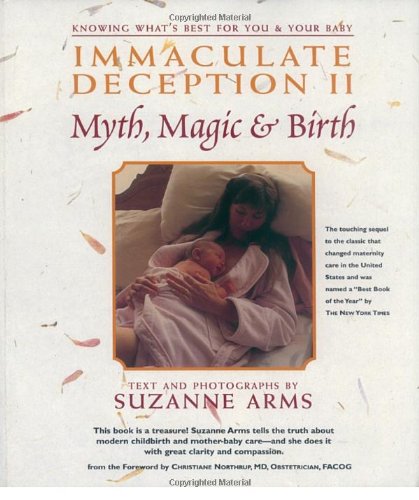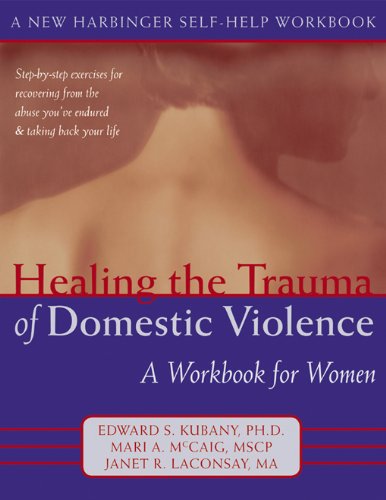The Epidemic Of Violence Against Women, With Suzanne Arms
 Note to Listener: As Suzanne Arms says to the listener at the beginning of this teleconference in August 2012, this is an adult discussion and you will want to ask your inner child to go play outdoors while your adult self hears some very disturbing facts and information about violence against women in our culture.
Note to Listener: As Suzanne Arms says to the listener at the beginning of this teleconference in August 2012, this is an adult discussion and you will want to ask your inner child to go play outdoors while your adult self hears some very disturbing facts and information about violence against women in our culture.
Suzanne attended two national conferences on violence against women and presents reports from those conferences while integrating her experience and expertise as a birth activist. Suzanne is the founder of Birthing the Future and is the author of the New York Times bestseller, Immaculate Deception: Myth, Magic and Birth.
This nearly two hour teleconference includes participants asking Suzanne questions about the connections between culturally accepted and “normative” abuse toward women and hospital and even birth center birthing practices. Lisa Reagan, Kindred’s editor, moderates the discussion.
Facts and figures: Ending violence against women
Various forms of violence, from the United Nations
- It is estimated that 35 per cent of women worldwide have experienced either physical and/or sexual intimate partner violence or sexual violence by a non-partner at some point in their lives. However, some national studies show that up to 70 per cent of women have experienced physical and/or sexual violence from an intimate partner in their lifetime [1].
- Women who have been physically or sexually abused by their partners are more than twice as likely to have an abortion, almost twice as likely to experience depression, and in some regions, 1.5 times more likely to acquire HIV, as compared to women who have not experienced partner violence [2]
![]() Although little data is available—and great variation in how psychological violence is measured across countries and cultures—existing evidence shows high prevalence rates. Forty-three per cent of women in the 28 European Union Member States have experienced some form of psychological violence by an intimate partner in their lifetime [3].
Although little data is available—and great variation in how psychological violence is measured across countries and cultures—existing evidence shows high prevalence rates. Forty-three per cent of women in the 28 European Union Member States have experienced some form of psychological violence by an intimate partner in their lifetime [3].- It is estimated that of all women who were the victims of homicide globally in 2012, almost half were killed by intimate partners or family members, compared to less than six per cent of men killed in the same year [4].
- More than 1 in 4 women in Washington DC, United States, have experienced some form of sexual harassment on public transportation, according to a survey conducted in 2016 [5].
- Worldwide, almost 750 million women and girls alive today were married before their 18thbirthday. Child marriage is more common in West and Central Africa, where over 4 in 10 girls were married before age 18, and about 1 in 7 were married or in union before age 15. Child marriage often results in early pregnancy and social isolation, interrupts schooling, limits the girl’s opportunities and increases her risk of experiencing domestic violence [6].
- Around 120 million girls worldwide (slightly more than 1 in 10) have experienced forced intercourse or other forced sexual acts at some point in their lives. By far the most common perpetrators of sexual violence against girls are current or former husbands, partners or boyfriends [7].
- At least 200 million women and girls alive today have undergone female genital mutilation in the 30 countries with representative data on prevalence. In most of these countries, the majority of girls were cut before age 5. [8].
- Adult women account for 51 per cent of all human trafficking victims detected globally. Women and girls together account for 71 per cent, with girls representing nearly three out of every four child trafficking victims. Nearly three out of every four trafficked women and girls are trafficked for the purpose of sexual exploitation [9].
- One in 10 women in the European Union report having experienced cyber-harassment since the age of 15 (including having received unwanted, offensive sexually explicit emails or SMS messages, or offensive, inappropriate advances on social networking sites). The risk is highest among young women between 18 and 29 years of age [10].
- An estimated 246 million girls and boys experience school-related violence every year and one in four girls say that they never feel comfortable using school latrines, according to a survey on youth conducted across four regions. The extent and forms of school-related violence that girls and boys experience differ, but evidence suggests that girls are at greater risk of sexual violence, harassment and exploitation. In addition to the resulting adverse psychological, sexual and reproductive health consequences, school-related gender-based violence is a major obstacle to universal schooling and the right to education for girls [11].
- Twenty-three per cent of female undergraduate university students reported having experienced sexual assault or sexual misconduct in a survey across 27 universities in the United States in 2015. Rates of reporting to campus officials, law enforcement or others ranged from 5 to 28 per cent, depending on the specific type of behavior [12].
- Eighty-two per cent of women parliamentarians who participated in a study conducted by the Inter-parliamentary Union in 39 countries across 5 regions reported having experienced some form of psychological violence while serving their terms. Psychological violence was defined as remarks, gestures and images of a sexist or humiliating sexual nature made against them or threats and/or mobbing to which they might have been subjected. They cited social media as the main channel through which such psychological violence is perpetrated; nearly half of those surveyed (44 per cent) reported having received death, rape, assault or abduction threats towards them or their families [13].
- Measures to address violence
- In the majority of countries with available data, less than 40 per cent of the women who experience violence seek help of any sort. Among women who do, most look to family and friends and very few look to formal institutions and mechanisms, such as police and health services. Less than 10 per cent of those women seeking help for experience of violence sought help by appealing to the police [14].
- At least 140 countries have passed laws on domestic violence, and 144 have laws on sexual harassment. However, even when laws exist, this does not mean they are always compliant with international standards and recommendations or implemented. Still, 37 countries exempt rape perpetrators from prosecution when they are married to or subsequently marry the victim [15].
- Availability of data on violence against women has increased significantly in recent years. Since 1995, more than 100 countries have conducted at least one survey addressing the issue. More than 40 countries conducted at least two surveys in the period between 1995 and 2014, which means that, depending on the comparability of the surveys, changes over time could be analysed [16].
- Violence among vulnerable groups
- Evidence suggests that certain characteristics of women, such as sexual orientation, disability status or ethnicity, and some contextual factors, such as humanitarian crises, including conflict and post-conflict situations, may increase women’s vulnerability to violence [17].
- In 2014, 23 per cent of non-heterosexual women (those who identified their sexual orientation as lesbian, bisexual or other) interviewed in the European Union indicated having experienced physical and/or sexual violence by both male and female non-partner perpetrators, compared with five per cent of heterosexual women [18].
- In a survey of 3,706 primary schoolchildren from Uganda, 24 per cent of 11 to 14-year-old girls with disabilities reported sexual violence at school, compared to 12 per cent of non-disabled girls [19].
Notes
[1] World Health Organization, Department of Reproductive Health and Research, London School of Hygiene and Tropical Medicine, South African Medical Research Council (2013). Global and regional estimates of violence against women: prevalence and health effects of intimate partner violence and non-partner sexual violence, p.2. For individual country information, see The World’s Women 2015, Trends and Statistics, Chapter 6, Violence against Women, United Nations Department of Economic and Social Affairs, 2015 and UN Women Global Database on Violence against Women.
[2] Ibid.
[3] European Union Agency for Fundamental Rights (2014). Violence against women: an EU-wide survey, p. 71.
[4] United Nations Office on Drugs and Crime (2014). Global Study on Homicide 2013, p. 14.
[5] Washington Metropolitan Area Transit Authority (2016). Understanding Sexual Harassment on Public Transportation, in UN Women (2017), Corporate Brief Safe Cities and Safe Public Spaces.
[6] UNICEF (2017). Is every child counted? Status of Data for Children in the SDGs, p. 54.
[7] UNICEF (2014). Hidden in Plain Sight: A Statistical Analysis of Violence against Children, p. 167.
[8] UNICEF (2016). Female Genital Mutilation/Cutting: A global concern.
[9] UNODC (2016). Global Report on Trafficking in Persons 2016, p. 7, 28.
[10] See European Union Agency for Fundamental Rights (2014). Violence against women: an EU-wide survey, p. 104.
[11] Data taken from (i) Education for All Global Monitoring Report (EFA GMR), UNESCO, United Nations Girls’ Education Initiative (UNGEI) (2015). School-related gender-based violence is preventing the achievement of quality education for all, Policy Paper 17, and (ii) UNGEI (2014). End School-related gender-based violence (SRGBVB) infographic.
[12] Cantor, D., Fisher, B., Chibnall, S., Townsend, R., Lee, H., Bruce, C., and Thomas, G. (2015). Report on the AAU Campus Climate Survey on Sexual Assault and Sexual Misconduct, p.13, 35.
[13] Inter-Parliamentary Union (2016). Sexism, harassment and violence against women parliamentarians, p. 3.
[14] United Nations Economic and Social Affairs (2015). The World’s Women 2015, Trends and Statistics, p. 159.
[15] World Bank Group (2015). Women, Business and the Law 2016, database.
[16] Ibid, p. 140.
[17] See European Union Agency for Fundamental Rights (2014). Violence against women: an EU-wide survey, Annex 3, p. 184-188.
[18] Ibid.
[19] Devries, K., Kyegome, N., Zuurmond, M., Parkes, J., Child, J., Walakira, E. and Naker, D. (2014). Violence against primary school children with disabilities in Uganda: a cross-sectional study, p. 6


